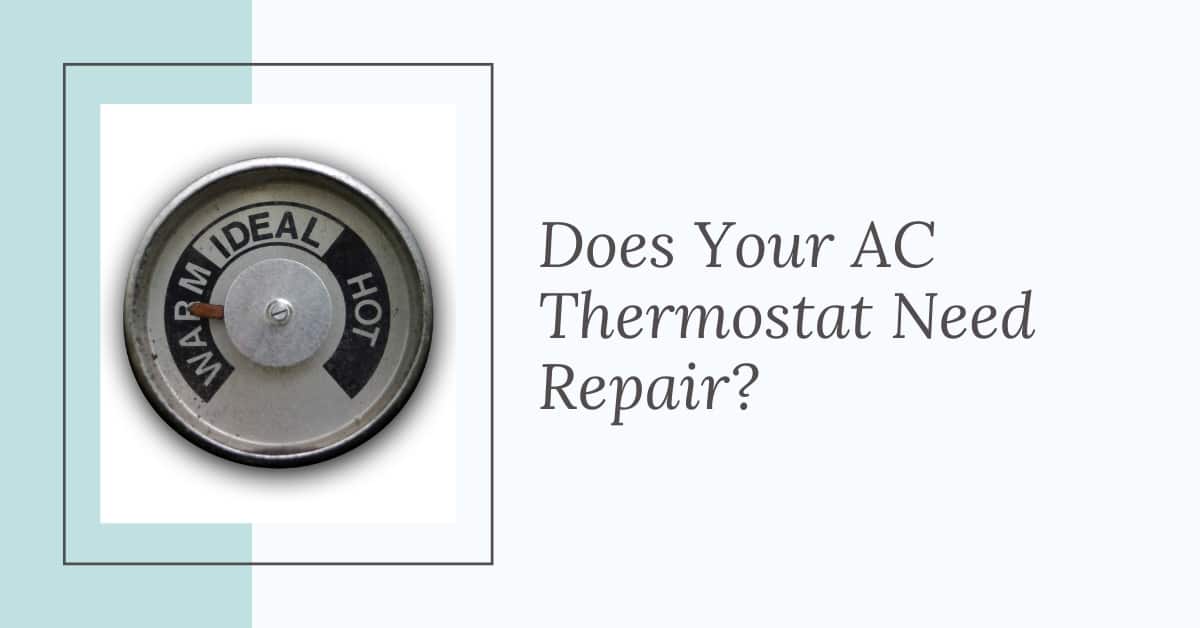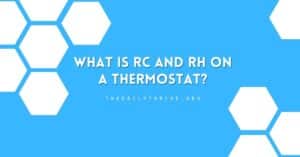Is your thermostat working correctly? When the temperature in your home isn’t just right, there is a good chance your thermostat is bad. We put together this handy guide to help you determine if your AC thermostat is not working and some steps you can do to fix the problems!
A thermostat controls both the heat and cooling elements of your air conditioning unit. The job of the thermostat is to determine what temperature it currently is in the room and how that compares with the desired temperature set through the control panel. Depending on if the air is too hot or too cold, your air conditioner responds with the correct action.
The AC thermostat is usually a very efficient tool, but sometimes your thermostat can run into problems. You might think that your air conditioner is broken when instead, it is your thermostat that needs repairs. Allow us to explain the different types of thermostats, how they operate, and common AC thermostat issues. Plus, 5 things you can do if your AC thermostat stops working.
Types Of Thermostats And How They Operate
There are two different main types of thermostats based on working principles, electromechanical and electronic.
Electromechanical Thermostats are the older thermostats that use a very basic mechanical principle of operation. 2 metals are joined together as a coil just beneath the face of the thermostat and as the temperature in the room fluctuates, so do the metal coils.
As the coils expand or contract, they alert the ‘contact’ switch when to turn on the heat and when to turn on the air. When the AC is turned off or at an ideal temperature, the metals stop expanding and contracting, causing both the AC and furnace to remain off.
Electronic Thermostats are the newer thermostats that do not rely on mercury or 2 metal strips. Instead, heat-sensing receptors are employed to determine the room temperature and then accurately turn on either the heat or the air.
Sort of like a computer, an electronic thermostat has memory to store data, allowing you more flexibility and options regarding how you use your AC. Since this includes fancy electrical components, it’s not uncommon for electronic thermostats to burn out over time.
Since electronic thermostats don’t simply depend on basic science to operate, there are more things that can go wrong.
The new generation is a Smart and/or Wi-Fi thermostat. This type of thermostat is ideal for tech-savvy homeowner that prefers optimal indoor comfort.
Common Problems With AC Thermostats
The good thing about an issue with your thermostat is that the solution is often simple to find and not too costly to fix. While it would make life easier if your thermostat shot out smoke or sparks at the first sign of a problem, it’s not usually so obvious when your thermostat starts to break down.
Some common AC problems that indicate a broken or faulty thermostat include:
- Your air conditioner won’t turn off.
- Your air conditioner constantly turns on and off.
- The thermostat reads a temperature that is not relevant to the actual room temperature.
- The air conditioning won’t turn on at all.
5 Things To Check Out If Your Thermostat Is Not Working
If your AC thermostat is bad, you can always call out a professional AC repair specialist in order to have the problem quickly addressed and solved. If you feel qualified enough, you can also poke around yourself to see what the problem may be.
Sometimes the issue can be easily fixed with the simple flip of a switch, and other times the problem will require professional services.
Here are some things you can check when your AC thermostat stops working:
1. Is your AC thermostat clean, or is it covered in a build-up of dust and debris? If too many pollutants start to clog your AC thermostat, the components inside, either electrical or naturally occurring, will stop functioning properly. If you regularly smoke inside of your home, nicotine is also known to build up and interfere with thermostat productivity.
2. To check if your thermostat is capable of reading the temperature and acting accordingly, reset the thermostat 5 degrees above or below the usual setting. If you hear it click on it right away; you know that it is working and the problem is elsewhere.
3. If your AC is not working, one of the first things worth checking out are the settings. You want to make sure that your thermostat is set to the appropriate mode, either “heat” or “cool.” AC thermostats can be confusing, and all have a different interface with separate operating instructions. Making sure that you have all of the settings appropriately set can make the difference between a working and non-working thermostat.
4. Reasons your thermostat can stop working include a blown a fuse, dead batteries, or an issue within the circuit breaker. One way to see if it is a circuit breaker issue is to check the switch for your air conditioner at the actual main circuit breaker. If the switch for the AC is turned to ‘off,’ you want to switch it to ‘ON.’ Sometimes, simply resetting thermostat or turning this switch on and off can help kick start your thermostat back into action.
5. Remove the thermostat from the wall to check for any loose or faulty wires hidden by the cover face. The thermostat wires that are green and red are related to the air conditioning system, and the white wires are related to the heating system.
Have a problem with your AC thermostat? Contact your local HVAC dealer today for reliable services and repairs.






